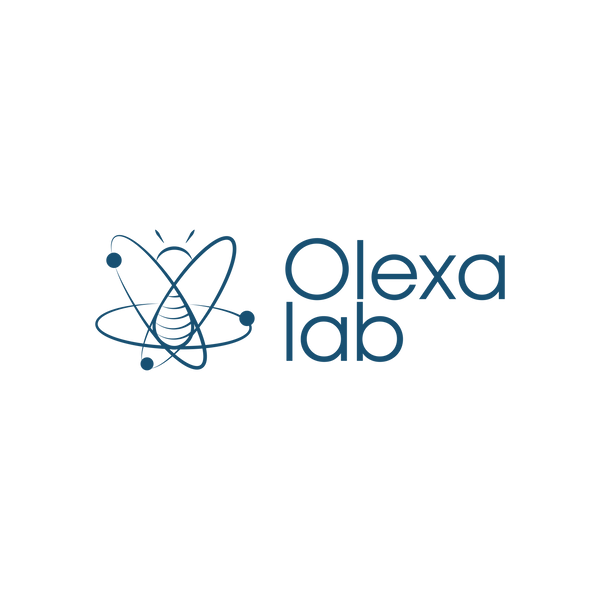The Role of Glucose Oxidase in Evaluating the Medicinal Properties of Honey
Honey has been a revered natural remedy for centuries, known for its numerous health benefits. However, not all honey is created equal. The medicinal properties of honey largely depend on its enzymatic activity, particularly that of glucose oxidase (GOx). This article delves into the critical role of glucose oxidase in raw honey, exploring how it contributes to honey’s bioactivity and why it is essential to measure this enzyme to assess honey’s medicinal quality.
What is Glucose Oxidase?
Glucose oxidase is a bee enzyme that catalyzes the oxidation of glucose to hydrogen peroxide (H2O2) and gluconic acid. This enzymatic reaction is crucial because hydrogen peroxide is a potent antimicrobial agent that can inhibit the growth of bacteria, fungi, and viruses. The presence and activity level of glucose oxidase in honey are indicators of its medicinal properties.
How Glucose Oxidase Works
When honey is consumed and diluted with water, glucose oxidase is activated, leading to the production of hydrogen peroxide. This reaction affects the conditions within the human gastrointestinal tract, where honey’s therapeutic effects are most potent. The generated hydrogen peroxide serves several essential functions:
- Antimicrobial Activity: Hydrogen peroxide effectively kills harmful microorganisms, making honey a natural antibiotic.
- Tissue Repair and Regeneration: The oxygen released during the breakdown of hydrogen peroxide promotes tissue repair and regeneration.
- Immune System Support: Hydrogen peroxide stimulates immune cells, enhancing the body’s natural defense mechanisms.
The Synergistic Role of Catalase
While glucose oxidase is crucial for generating hydrogen peroxide, catalase, another enzyme in honey, breaks down hydrogen peroxide into water and oxygen. This balance ensures the antimicrobial effects of hydrogen peroxide are maximized without causing damage to healthy tissues. The interplay between glucose oxidase and catalase is vital for maintaining honey’s therapeutic properties.
Glucose Oxidase (GOx) and Catalase (Cat) are protein based enzymes, therefore they are deactivated when heated, they are not present in artificial/adulterated honey.
Measuring Glucose Oxidase Activity with The Active Honey Test
Given the importance of glucose oxidase in determining the medicinal quality of honey, it is essential to have a reliable method to measure its activity. The Active Honey Test is designed to assess the glucose oxidase activity in honey, providing a clear indication of its potential health benefits.
How the Active Honey Test Works
The Active Honey Test involves diluting honey with water to activate the enzymes and then measuring the amount of hydrogen peroxide produced. This test simulates the conditions in the human gastrointestinal tract, offering an accurate representation of the honey’s medicinal properties. The results of the Active Honey Test can classify honey into different categories based on its bioactivity:
- Active Honey: Detectable level of hydrogen peroxide production indicate strong antimicrobial and therapeutic properties.
- Low Activity Honey: Low level of hydrogen peroxide indicate minimal or no existent therapeutic benefits, often found in processed or adulterated honey.
Benefits of the Active Honey Test
- Consumer Confidence: Knowing the glucose oxidase activity helps consumers choose honey with proven health benefits.
- Medical Applications: Identifying highly active honey can guide its use in treating specific health conditions, such as infections or gastrointestinal issues.
- Quality Assurance: The test can help distinguish between raw, unprocessed honey and adulterated or low-quality honey, ensuring that only the best products reach the market.
High-activity honey, as determined by the Active Honey Test, offers several significant health benefits.
To fully benefit from the medicinal properties of honey, it is crucial to select raw, unprocessed honey with high glucose oxidase activity. The Active Honey Test can guide this selection, ensuring that consumers and healthcare providers choose honey with proven therapeutic potential.
Purchasing honey directly from a local beekeeper doesn’t always ensure high enzyme levels.
Learn why.
Using Honey in Daily Life
Incorporating high-activity honey into your daily routine can be simple and effective:
- For Immune Support: Take a spoonful of high-activity honey daily to boost your immune system and prevent infections.
- For Wound Care: Apply high-activity honey topically to minor cuts, burns, and abrasions to promote healing and prevent infection.
- For Gastrointestinal Health: Consume high-activity honey with warm water or herbal tea to soothe digestive issues and maintain gut health.
- For Anti-inflammatory Benefits: Add high-activity honey to your diet to help manage inflammation and reduce the risk of chronic diseases.
Educating Consumers
Educating consumers about the importance of glucose oxidase activity in honey is essential for promoting its medicinal use. Providing clear information on honey labels, including results from the Active Honey Test, can help consumers make informed choices. Additionally, promoting the benefits of high-activity honey through educational campaigns can raise awareness about its health advantages.
Conclusion: The Power of Glucose Oxidase in Raw Honey
Glucose oxidase is a critical enzyme that determines the medicinal properties of raw honey. By measuring its activity with the Active Honey Test, we can assess the health benefits of different honey samples accurately. High-activity honey, rich in glucose oxidase, offers significant antimicrobial, immune-boosting, gastrointestinal, and anti-inflammatory benefits. Selecting and using high-activity honey can enhance overall health and well-being, making it a valuable addition to natural health practices.






